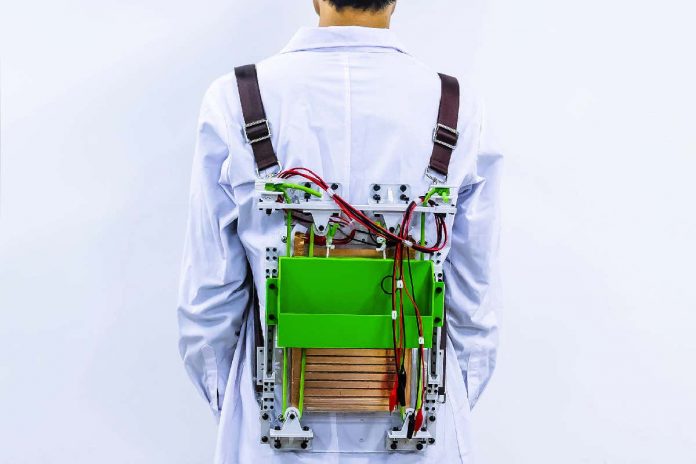[ad_1]

Adapted from ACS Nano 2021, DOI: 10.1021/acsnano.0c07498
A backpack fitted with shock absorbers that generate electricity is easier to carry and can power LEDs and other devices.
The backpack is suspended on sliding rails that allow it to move up and down a pair of rubber ropes on a pulley system, acting like a car’s suspension to reduce the impact of the bag on the wearer of as they walk. This reduces the amount of force generated by the contents of the backpack jiggling about by around 21 percent.
“When we are walking, the mass centre of the body moves up and down,” says Jia Cheng of Tsinghua University, China, who developed the backpack prototype with his colleagues. An ordinary backpack moves with this mass centre, but the pulley system cancels that motion out, then uses the relative movement between the bag and the body to power a triboelectric nanogenerator (TENG) that converts mechanical energy into electricity.
Advertisement
When worn by someone walking, the backpack’s TENG can convert 14 per cent of the bag’s movement into electricity, producing 118 micro Joules. The team were able to use this to power light emitting diodes, a fluorescent light, or an electric watch.
“This is a very interesting work for powerless electronic devices and a step forward to green electronics,” says Chan Hwang See of Edinburgh Napier University, UK. Hwang See says he’d like to see further improvements in the energy efficiency of the TENG to make system lighter, as the current version is around 3 kilograms – too heavy to be widely used, he says.
Cheng agrees with both goals. “The prototype actually is a little heavy, but I think we can reduce the weight in the future and make it more feasible [to use in real life] – as well as improving the power density performance,” he says. He hopes to bring the next version down to 1 kilogram.
Journal reference: ACS Nano, DOI: 10.1021/acsnano.0c07498
More on these topics:
[ad_2]
Source link











